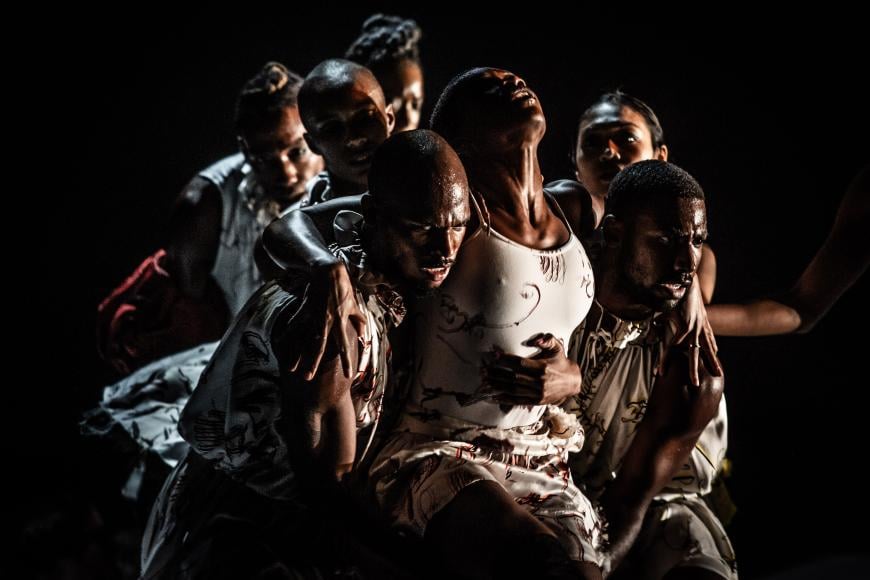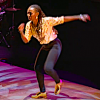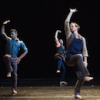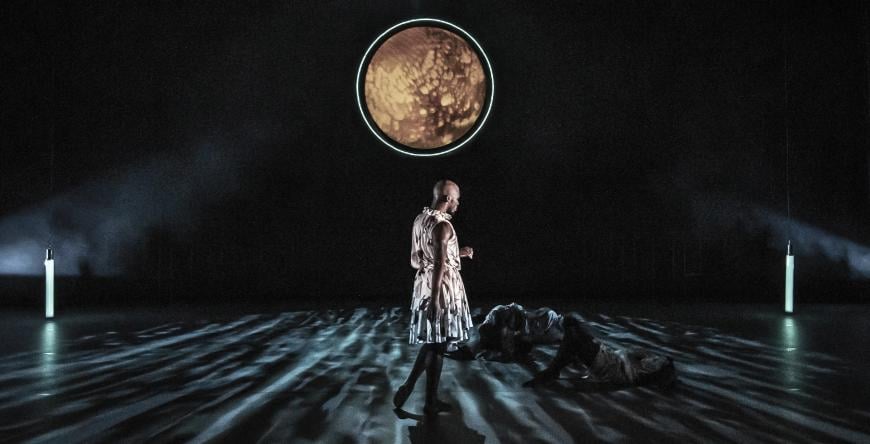
The company A.I.M. by Kyle Abraham, which premiered the choreographer’s new Requiem: Fire in the Air of the Earth Saturday night at Stanford University’s Memorial Auditorium, is not as well-known now as it may well become. The performance seemed a harbinger if one there ever were.
Abraham, who has won nearly as many honors and scholarly recognitions as he has created dances (topped, perhaps, by a MacArthur “Genius Grant”), fluently draws from a vast array of dance forms and Black liberation theology, a phrase doubtless outdated in the years since Black Lives Matter became a part of a worldwide movement, a resounding, reverberating collage of recognition, resentment, resolve.
What feels new and relatable even as it sears itself into the eye and heart is the richly kaleidoscopic movement. Accompanied by the composer Jlin’s roaring soundscape, in company with Dan Scully’s superb scenic design — surmounted on the backdrop by a circular lens projecting films of naturalistic abstractions — his Requiem embodies a view of the universe, real or imagined. This is well-matched with Abraham’s steady, informed, thoroughly fluent appropriation of Western classical ballet, African tribal idioms, Graham, Cunningham, Cage, Ailey, street dance (including breaking and capoeira), and foxtrot and two-step, Fred and Ginger-style.
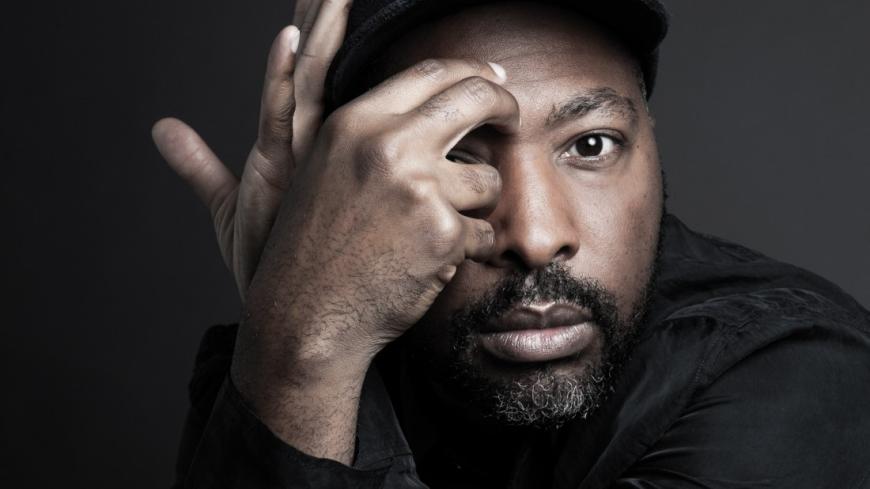
Requiem was created in collaboration with Jlin, the stage alias of Jerrilynn Patton, an electronic music producer from Indiana. Depending on your viewpoint, Jlin’s composition may redefine, elevate, or eviscerate Mozart’s Requiem, announcing itself by thumping in on a bass drum during one of Mozart’s most elevated choral moments. As we soon see, it had to be that way.
And how about those unisex costumes for the 10 remarkable dancers? Created by couture designer Giles Deacon, they put the dancers of A.I.M. in short dresses, suggesting tutus in their fullness and modified slightly from dancer to dancer — shiny white undershorts that weirdly catch the light for the men, less obtrusive underpinnings for the equally strong and graceful women. (Men in dresses — just when I was finally getting used to men in skirts.) The white dress fabric is splashed with black and sometimes, in the lights, limned in blood red. And the garments have weird accoutrements, possibly inspired by Rei Kawakubo’s lumpen, ofttimes hunchbacked protuberances, last seen by this witness in a Merce Cunningham dance back in the ’80s. The current appendages show up as arm gaiters and fanny bumps.
All of this is but a frame for what Abraham is about. Or maybe even a deliberate distraction, underscoring the painful surprises to come.
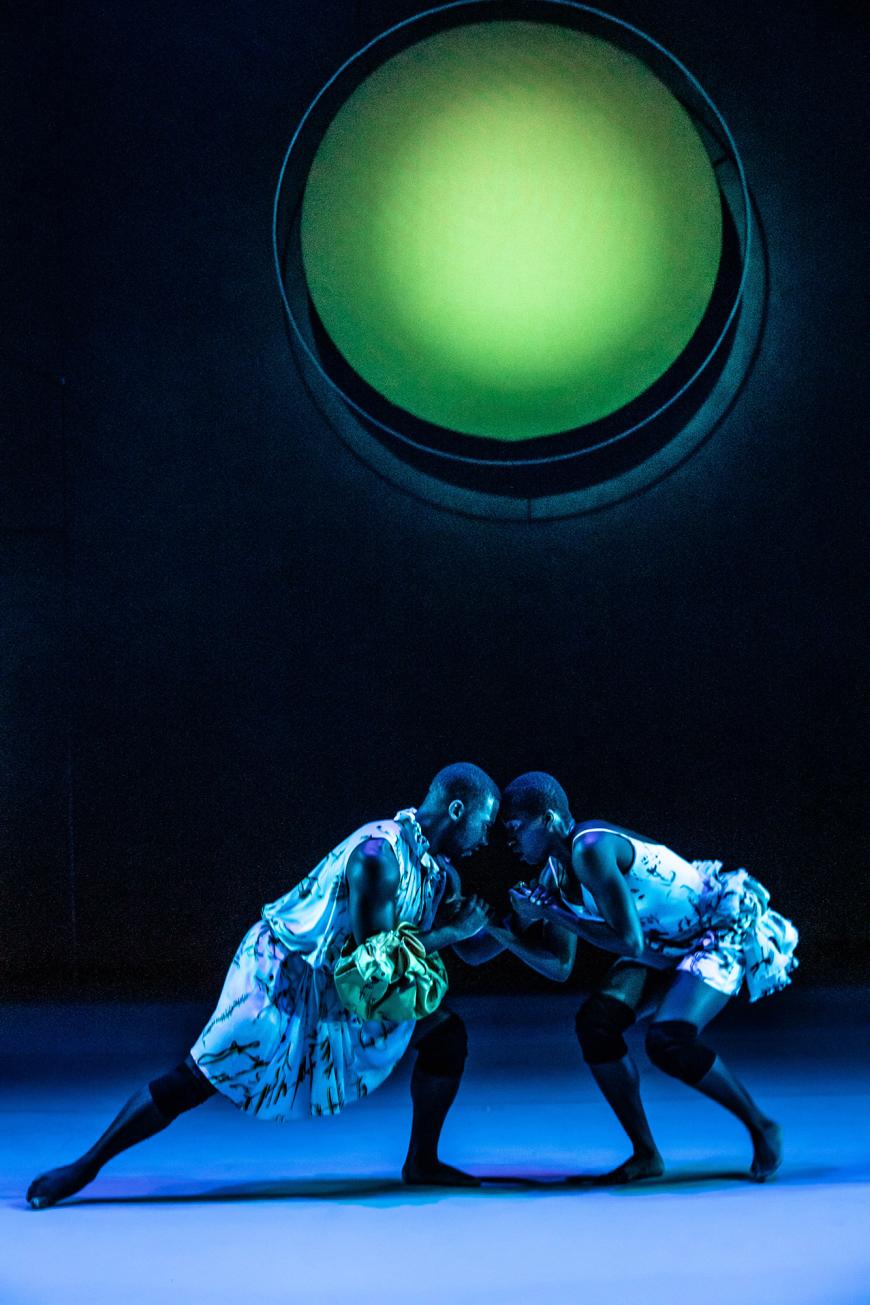
Abraham’s troupe of predominantly Black dancers is a community, first appearing as a single-file chorus, moving in stunning unison through a dynamic combination, showcasing one of Abraham’s superpowers. It’s balletic, but it’s modern; as it disbands and regathers, we see that the classical vocabulary is honored in the breach; an attitude, a flexed arabesque, for instance, is hip-sprung, with a flexed foot, but in the little jumps called changements the toes are pointed. Throughout the one-hour show, steps change. A classical verity becomes an anomaly. Moods shift too; the net result is that the hour seems longer — but never dull. It’s rich and dense, uplifting and stunning — or harrowing, as if the ground has given way.
As the piece moves forward, the life of the neighborhood shifts, changes often announced by dancers’ deliquescing from grace and uplift to quivering collapse. You may never have seen collapses like these; lying or crouching on the floor, the dancers’ torsos ripple, like an agitated stream — or scream. Sometimes the lighting reflects the change, turning dark and foreboding; sometimes the stage looks unchanged and dancers tell the tale. It’s what might happen on any street in any community to people being brought low by brutality, by racism, by agonizing betrayal of their humanity.
We used to call shows like these a trip. But in the context of times like these, Kyle Abraham’s Requiem: Fire in the Air of the Earth fulfills its name.
There are countless passages and phrases that beautifully reflect love and concern, empathy and humor. And hope. The dancers are above all a unit, whether fusing or fighting — some great breaking and capoeira here — or in lovelorn pursuit, Chaplin-style. But when those embellishments to the frame give way, the imagery can burn the brain. We don’t see the bullies, the bad cops, the casual cruelty. We see the results: the despair, the illness, the rage. Or maybe that’s us.
